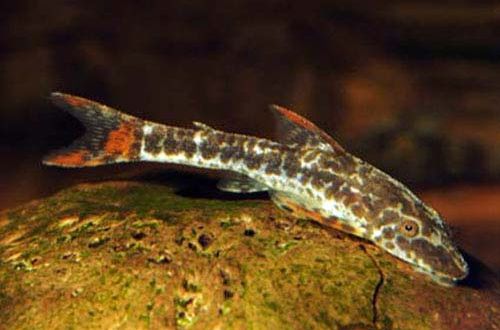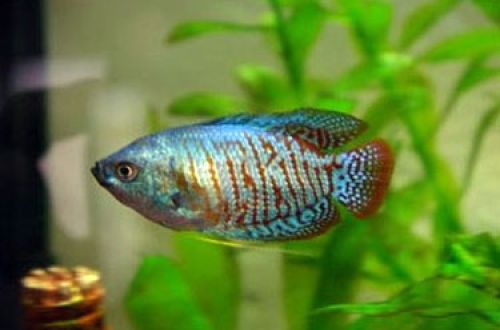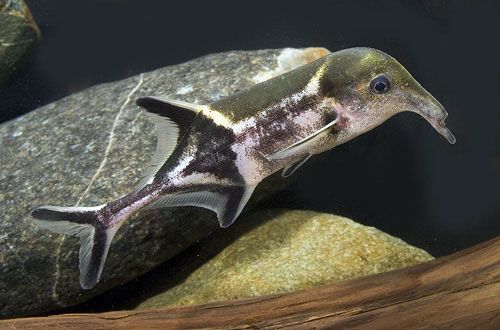
Parotocinclus redfin
Parotocinclus redfin, scientific name Parotocinclus maculicauda, belongs to the family Loricariidae (Mail catfish). The fish is native to South America and inhabits coastal river systems between Santa Catarina and Rio de Janeiro in Brazil.

Contents
Description
Adults reach a length of about 6 cm. The fish has an elongated body with a large cone-shaped head. Being a miniature bottom inhabitant, the catfish is threatened by many dangers, therefore the eyes of the catfish are placed high on the head and look up, looking out for possible predators, and the first rays of the fins, including those near the tail, are noticeably thickened and turned into peculiar spikes.
The coloration is spotted, the pattern consists of brown specks of a rounded shape, located on a lighter background. The fins and tail are reddish or brick-colored.
Parotocinclus is similar to its closest relatives, Otocinclus, but unlike them, it has a tiny anal fin. Perhaps this is the only difference between the two genera.
Behavior and Compatibility
Peaceful friendly fish that prefers to be in the company of relatives and other non-aggressive species of comparable size.
Brief information:
- The volume of the aquarium – from 40 liters.
- Temperature – 20-24°C
- Value pH — 6.5–7.5
- Water hardness – soft and medium hardness (up to 20 dGH)
- Substrate type – any
- Lighting – moderate
- Brackish water – no
- Water movement is weak
- The size of the fish is up to 6 cm.
- Nutrition – feed with a predominance of herbal supplements
- Temperament – peaceful
- Content alone or in a group
Maintenance and care, arrangement of the aquarium
The optimal size of the aquarium for a group of 4-5 fish starts from 50-60 liters. The choice of design is not so important. Catfish is able to live both among dense plantings of plants, and among a heap of rocks and snags.
Given the dietary habits of Parotocinclus redfin, some plant species may be damaged.
Long-term successful maintenance is possible only in clean, relatively cool water (20 ° C – 24 ° C), while the hydrochemical composition of the water is in a fairly wide acceptable range, which simplifies the water treatment process.
Food
Omnivorous species. The basis of the diet will be popular dry food (flakes, granules). It is recommended to regularly feed plant-based foods, as well as slices of cucumbers, lettuce, zucchini, etc. Protein foods such as fresh or frozen bloodworms, brine shrimp, daphnia, etc. will be a good addition.
May eat algae and soft parts of aquatic plants.
Breeding / breeding
Spawning takes place at a temperature of about 24°C in clean water with a pH around neutral or slightly acidic. Usually lays 10–20 eggs, often laying on plant leaves. The fry grow slowly.





